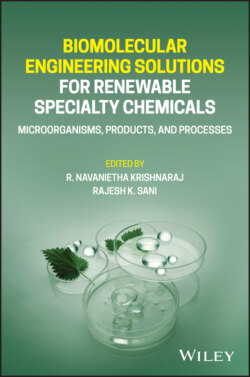Читать книгу Biomolecular Engineering Solutions for Renewable Specialty Chemicals - Группа авторов - Страница 18
1.2.1.3.1 Mechanism of Action
ОглавлениеThe DNA ligation reaction has two main steps. First, the DNA ends collide with each other by chance and reside together for enough time for the ligase to join them. For sticky overhangs, there is an additional reason; lower temperature stabilizes the hydrogen bonding between the complementary nucleotides, which really helps to join easily. DNA ligase catalyzes the joining of the 3′‐OH to the 5′‐phosphate via a two‐step process. First, the AMP nucleotide, which is linked to a lysine residue in the enzyme’s active site, is shifted to the 5′‐phosphate. Then the AMP‐phosphate bond is attacked by the 3′‐OH, forming the covalent bond and discharging AMP. To allow the enzyme to conduct further reactions, the AMP in the enzyme’s active site must be restocked by ATP. The DNA ligase enzyme has optimal activity at 25 °C so the ligation reaction is carried out at a temperature range of 16–25 °C. Normally, 1 hour at 16 °C is best for ligation but since bringing the DNA ends together is the least efficient part of the reaction favoring this by lowering the temperature to 4 °C can give even more efficiency. Two types of ligases are there that are used in genetic engineering. E. coli ligases which is generally used to join two sticky or cohesive ends. It is mainly used to catalyze a phosphodiester bond between duplex DNA‐containing cohesive ends. It will not efficiently ligate blunt‐ended fragments as much as it efficient for sticky end ligation. NAD+ is required as a cofactor for the ligation reaction. T4 DNA ligase that is generally used for the ligation of blunt‐ended DNA molecules. This enzyme can join blunt‐ended termini as well as ends with cohesive overhangs (either 3′ or 5′ complementary overhangs). This enzyme will also function for the repair of single‐stranded nicks in duplex DNA, RNA, or DNA/RNA duplexes. ATP is required as a cofactor for the ligation reaction. All the reactions are generally carried out at 16 °C. Sometimes PEG (polyethylene glycol) can be added that helps in fusion and increases the frequency of collision between two DNA molecules.
